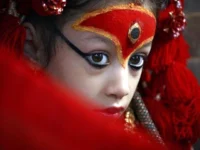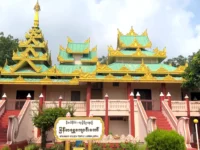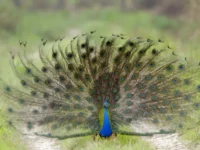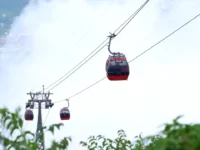Nepal is famous for its world heritage sites, Tourist attractions, and monuments. Tourism is the second income source of the country. Entrance fees, National park fees, and climbing royalties are the backbone of the Nepalese economy. Foreign tourists visiting heritage sites, attraction places, and monuments of the country and have to pay a certain entrance fee to get inside the area. The people of South Asian countries (SAARC) have to pay fewer entrance fees in comparison to tourists from other countries. Many tourists want to see the typical Nepalese art and cultural places, happily paying the entrance fee because it is worth paying to visit.
The 7 heritage sites of Kathmandu Valley are amazing. Boudhanath, Pashupatinath, Swayambhunath, Kathmandu Durbar Square, Patan Durbar Square, Bhaktapur Durbar Square, and Changunarayan have their own history. They are not only rich in art and architecture but also home to the spiritual places of Hinduism and Buddhism. Most of the constructions made have a tantric background and a old history.
Not only the Kathmandu valley but also other parts of the country are also rich in nature and history. Lumbini (birthplace of Gautam Buddha), Chitwan National Park, Pokhara, Nagarkot, Trekking trails, Peak climbing, and expeditions are the main tourist destinations in Nepal and the main income sources of the country. It is the government that keeps the price of priceless monuments and makes some money from tourists who visit them.
📌 Entry Fees for Tourist Sites in Nepal (Updated 2025)
🏛 Kathmandu Valley:
Kathmandu Valley is the cultural, historical, and political heart of Nepal, surrounded by green hills and dotted with ancient temples, palaces, and vibrant towns. The valley is home to three historic cities—Kathmandu, Bhaktapur, and Patan (Lalitpur)—each boasting its own Durbar Square filled with centuries-old architecture and UNESCO World Heritage Sites. Kathmandu Durbar Square showcases royal palaces, courtyards, and the famous Kumari Ghar, where the Living Goddess resides. Nearby, the bustling streets of Asan Bazaar reflect the traditional lifestyle of locals with spice markets, handicrafts, and vibrant daily trade. One of the valley’s most iconic landmarks is the Swayambhunath Stupa, also known as the Monkey Temple, which offers panoramic views of the city and symbolizes harmony between Buddhism and Hinduism.
Pashupatinath Temple, situated along the Bagmati River, is one of the most sacred Hindu temples dedicated to Lord Shiva and an important pilgrimage site. Another prominent Buddhist site is the Boudhanath Stupa, one of the largest in the world, attracting monks and pilgrims who circle the stupa with prayer wheels. Patan Durbar Square is famous for its exquisite stone carvings, Krishna Mandir, and the Patan Museum, which houses artifacts showcasing Nepal’s rich history and artistry. Bhaktapur Durbar Square is renowned for its medieval charm, the 55-Window Palace, and the Nyatapola Temple, which is the tallest pagoda-style temple in Nepal. The valley is also home to ancient towns like Bungamati and Khokana, where traditional Newari culture and farming lifestyles are still preserved.
Kathmandu Valley has been a center of civilization for more than 2,000 years, influenced by Hindu and Buddhist dynasties that left behind remarkable architecture and spiritual heritage. The artistic wood carvings, stone sculptures, and pagoda-style temples highlight the valley’s mastery in traditional craftsmanship. Festivals such as Indra Jatra, Bisket Jatra, and Rato Machhindranath add vibrant colors to the valley’s cultural calendar, drawing locals and tourists alike. Despite modernization, the valley continues to balance ancient traditions with urban life, making it a living museum of art, culture, and spirituality. Today, Kathmandu Valley stands as the gateway to Nepal’s trekking regions, while still being a treasure trove of history and culture in its own right.
| Site | Foreign Nationals | SAARC Nationals | Chinese | Nepalese | Contact | Remarks |
|---|---|---|---|---|---|---|
| Kathmandu Durbar Square incl. Tribhuvan Museum | NPR 1,000 | NPR 500 | NPR 1,000 | Free | 01-4268969 / 01-4269452 | Below 10 years free |
| National Museum, Chauni | NPR 150 (camera NPR 100, video NPR 200) | NPR 50 (camera NPR 75, video NPR 150) | NPR 150 | Students: NPR 10; Others: NPR 25 (camera NPR 50, video NPR 100) | 01-4271504 / 01-4271478 | Closed Tue; Half-day Mon (10:30–14:00) |
| Patan Durbar Square incl. Patan Museum | NPR 1,000 | NPR 250 | NPR 1,000 | Students: NPR 10–30 | — | Fees for Nepali only inside Museum |
| Patan Golden Temple | NPR 100 | NPR 50 | NPR 100 | Free | 01-5534595 / 01-5540227 | Closed on Buddha Jayanti |
| Bhaktapur Durbar Square | NPR 1,500 (US$15) | NPR 500 | NPR 500 | Free | 01-6612249 | Below 10 years free; 1 leader free for groups 11–20 |
| National Art Museum, Bhaktapur | NPR 150 (camera NPR 100, video NPR 200) | NPR 50 (camera NPR 50, video NPR 150) | NPR 150 | Students: NPR 10; Others: NPR 25 (camera NPR 50, video NPR 100) | 01-6610004 | Closed Tue; Includes Wood & Bronze Museums |
| Swayambhunath (Monkey Temple) | NPR 200 | NPR 50 | NPR 200 | Free | 01-4281889 / 01-4277236 | Below 10 years free |
| Boudhanath Stupa | NPR 400 | NPR 100 | NPR 400 | Free | 01-4489257 | Below 10 years free |
| Pashupatinath Temple | NPR 1,000/day | NPR 1,000 (Indians free) | NPR 1,000 | Free | 01-4462767 / 01-4470340 | View temple from rear premises |
| Changunarayan Temple | NPR 300 | NPR 100 | NPR 300 | Free | 01-5090958 | — |
| Ethnographic Museum (NTB, Bhrikutimandap) | NPR 200 | NPR 100 | NPR 100 | Students: NPR 15; Others: NPR 30 | 01-4256909 ext.172 | — |
| Garden of Dreams, Kathmandu | NPR 400 | NPR 400 | NPR 400 | NPR 150 (Kids 5–11: NPR 50) | 01-4425340 / 01-4425341 | Free <5 yrs; 25% off groups (10+) |
| Godawari Park | NPR 500 (child <10: NPR 150) | NPR 200 (child <10: NPR 50) | NPR 200 | NPR 50 | 01-5174246 | Students: 50% off |
| Central Zoo | NPR 1,000 (child 4–12: NPR 500) | NPR 500 (child 4–12: NPR 250) | NPR 1,000 | NPR 200 (Students: NPR 30; child 4–12: NPR 135) | — | — |
🌸 Lumbini:
Lumbini, located in the Rupandehi district of southern Nepal, is one of the most sacred pilgrimage sites in the world and holds immense historical and spiritual significance. It is the birthplace of Siddhartha Gautama, who later became known as Lord Buddha, the founder of Buddhism. According to historical records and inscriptions, Buddha was born in Lumbini in 623 BCE, and the site has been revered by Buddhists and spiritual seekers for centuries. The heart of Lumbini is the Maya Devi Temple, which marks the exact spot where Queen Maya Devi gave birth to Prince Siddhartha. Inside the temple, a stone marker and ancient ruins reveal evidence of structures built as early as the 3rd century BCE, making it an archaeological treasure.
The sacred Ashokan Pillar, erected by Emperor Ashoka in 249 BCE, still stands at the site as proof of Lumbini’s authenticity as Buddha’s birthplace. Surrounding the temple complex is a tranquil garden with a sacred pond known as Puskarini, where Queen Maya Devi is believed to have bathed before giving birth. The entire Lumbini area has been designated as a UNESCO World Heritage Site due to its religious importance and archaeological remains. In modern times, the Lumbini Development Zone has been established, featuring monasteries built by Buddhist communities from around the world, each reflecting unique architectural styles of their respective countries. Walking through this monastic zone feels like a spiritual journey across Asia, with monasteries from Thailand, Myanmar, China, Japan, and Tibet contributing to the peaceful atmosphere.
Lumbini is not only a pilgrimage site but also a center for peace and meditation. The World Peace Pagoda, built by Japanese Buddhists, stands as a symbol of harmony and non-violence. Pilgrims and tourists often come to practice meditation, participate in spiritual teachings, or simply enjoy the serene environment. Beyond its religious value, Lumbini also plays an important role in promoting global peace, as it symbolizes the universal message of compassion and non-violence taught by Buddha. Today, it attracts not only Buddhists but also travelers and historians eager to explore its timeless history. Lumbini continues to inspire millions of people worldwide, making it a sacred destination where history, spirituality, and tranquility come together beautifully.
| Site | Foreign Nationals | SAARC Nationals | Chinese | Nepalese | Contact | Remarks |
|---|---|---|---|---|---|---|
| Lumbini Sacred Garden | NPR 700 | NPR 400 | NPR 700 | NPR 20 (Indians NPR 16) | 071-580189 | — |
| Lumbini Museum | NPR 50 | NPR 50 | NPR 50 | NPR 10 | 071-580318 | Closed Tue |
| Kapilvastu Museum | NPR 10 | NPR 5 | NPR 10 | NPR 2 | — | Closed Tue |
🐘 Chitwan:
Chitwan National Park, located in the subtropical lowlands of south-central Nepal, is the country’s first national park and one of the most famous wildlife destinations in Asia. Established in 1973 and later declared a UNESCO World Heritage Site in 1984, the park covers an area of 952 square kilometers. It is renowned for its rich biodiversity, with dense sal forests, grasslands, marshes, and riverine habitats providing shelter to a wide variety of wildlife species. The park is home to rare and endangered animals such as the one-horned rhinoceros, Bengal tiger, gharial crocodile, and wild elephant, making it a paradise for nature lovers and wildlife photographers.
The Rapti, Narayani, and Reu rivers flow through the park, creating fertile ecosystems that support both aquatic and terrestrial life. Birdwatchers are especially drawn to Chitwan, as it hosts more than 500 species of birds, including hornbills, kingfishers, and migratory species. Jungle activities in the park include jeep safaris, canoe rides, and jungle walks, which allow visitors to experience the wilderness up close. Canoe rides on the Rapti River offer opportunities to see gharials and marsh mugger crocodiles basking on the riverbanks. Another highlight is the elephant breeding center, where visitors can learn about the conservation efforts for Asian elephants.
Beyond wildlife, Chitwan is also rich in culture, particularly with the indigenous Tharu community who live around the park. Visitors can experience their traditions, dances, and lifestyle, which are closely tied to the natural environment. Evening cultural shows and Tharu stick dances add a vibrant dimension to the visit. The park plays a crucial role in conservation, with successful programs for protecting rhinos and tigers that were once on the brink of extinction in Nepal. Today, Chitwan National Park serves not only as a conservation haven but also as an eco-tourism hotspot, attracting thousands of visitors annually. Its blend of adventure, wildlife, and culture makes it one of the must-visit destinations in Nepal.
| Site | Foreign Nationals | SAARC Nationals | Chinese | Nepalese | Contact | Remarks |
|---|---|---|---|---|---|---|
| Chitwan National Park | NPR 2,000 + 13% VAT | NPR 1,000 + 13% VAT | NPR 2,000 + 13% VAT | NPR 150 + 13% VAT | 056-621069 | Elephant ride: Foreigner NPR 2,500; SAARC NPR 1,500; Nepali NPR 500 |
| Elephant Breeding Center | NPR 100 | NPR 50 | NPR 100 | NPR 25 | 056-580154 | — |
| Tharu Cultural Museum | NPR 25 | NPR 15 | NPR 25 | NPR 10 | 056-580121 | Below 10 years free |
🏔 Pokhara:
Pokhara, often called the “Tourist Capital of Nepal,” is one of the most beautiful cities in the country, located about 200 km west of Kathmandu. Nestled at the foothills of the Annapurna and Machhapuchhre (Fishtail) mountains, the city is famous for its stunning natural beauty and serene atmosphere. The jewel of Pokhara is Phewa Lake, where travelers can enjoy boating while admiring the reflection of snowcapped peaks on the water’s surface. Along the lakeside, vibrant cafes, restaurants, and shops create a lively yet peaceful environment for visitors. The World Peace Pagoda, perched on a hilltop overlooking the lake, offers panoramic views of Pokhara Valley and the Himalayan range.
Another natural wonder of Pokhara is Davis Falls, a powerful waterfall that disappears into an underground tunnel, creating a fascinating sight. Nearby, Gupteshwor Mahadev Cave houses a sacred Shiva lingam and extends deep into the limestone rock formations. The International Mountain Museum is another highlight, showcasing Nepal’s mountaineering history, Himalayan culture, and the lives of legendary climbers. Adventure seekers consider Pokhara a hub for activities such as paragliding, ultralight flights, zip-lining, and mountain biking, making it a paradise for thrill-lovers. Sarangkot Hill, located just above the city, is renowned for its breathtaking sunrise and sunset views over the Annapurna and Dhaulagiri ranges.
Pokhara is also the gateway to some of Nepal’s most popular treks, including the Annapurna Base Camp, Ghorepani Poon Hill, and the Annapurna Circuit. The city blends natural wonders with cultural and spiritual sites, such as Bindhyabasini Temple, which is dedicated to Goddess Bhagwati. Its mild climate and relaxed vibe attract both domestic and international travelers year-round. In addition, the Seti River Gorge and Mahendra Cave highlight the city’s unique geological features. Pokhara perfectly balances tranquility and adventure, offering experiences for all kinds of travelers. Today, it stands as one of Nepal’s most loved destinations, combining Himalayan views, serene lakes, and cultural richness in one breathtaking setting.
| Site | Foreign Nationals | SAARC Nationals | Chinese | Nepalese | Remarks |
|---|---|---|---|---|---|
| International Mountain Museum | NPR 400 | NPR 200 | NPR 400 | Free | Closed Tue |
| Davis Falls | NPR 30 | NPR 30 | NPR 30 | NPR 20 | — |
| Mahendra Cave | NPR 100 | NPR 100 | NPR 100 | NPR 50 | — |
| Sarangkot | NPR 100 | NPR 100 | NPR 100 | NPR 50 | — |
| Boating (Phewa Lake, 1 hour, max 4 pax) | NPR 650 | NPR 650 | NPR 650 | NPR 650 | — |
| 2-way boat to Tal Barahi Temple | NPR 80 | NPR 80 | NPR 80 | NPR 80 | — |
| Tal Barahi Temple | Free | Free | Free | Free | — |
⛩ Other Sites:
Manakamana Cable Car: Located in Kurintar, it is Nepal’s first cable car system, connecting the highway to Manakamana Temple in just 10 minutes. The ride offers breathtaking views of the Trishuli River, terraced hills, and distant mountains.
Manakamana Temple: A sacred Hindu temple dedicated to Goddess Bhagwati, believed to grant the wishes of devotees. Pilgrims from all over Nepal and India visit here to offer prayers and sacrifices.
Chandragiri Cable Car: Situated on the outskirts of Kathmandu, this modern cable car takes visitors to Chandragiri Hill in around 10 minutes. From the top, you can see panoramic views of the Kathmandu Valley and the Himalayan range, including Mt. Everest on clear days.
Nagarkot: A popular hill station located about 32 km from Kathmandu, famous for sunrise and sunset views over the Himalayas. It offers scenic landscapes, fresh mountain air, and peaceful resorts, making it a favorite short getaway near the capital.
| Site | Foreign Nationals | SAARC Nationals | Chinese | Nepalese | Remarks |
|---|---|---|---|---|---|
| Manakamana Cable Car | NPR 1,000 | NPR 800 | NPR 1,000 | NPR 750 | — |
| Manakamana Temple | Free | Free | Free | Free | — |
| Chandragiri Cable Car (2-way) | NPR 2,400 | NPR 800 | NPR 2,400 | NPR 700 | — |
| Nagarkot | NPR 340 | NPR 340 | NPR 340 | NPR 25 | — |








